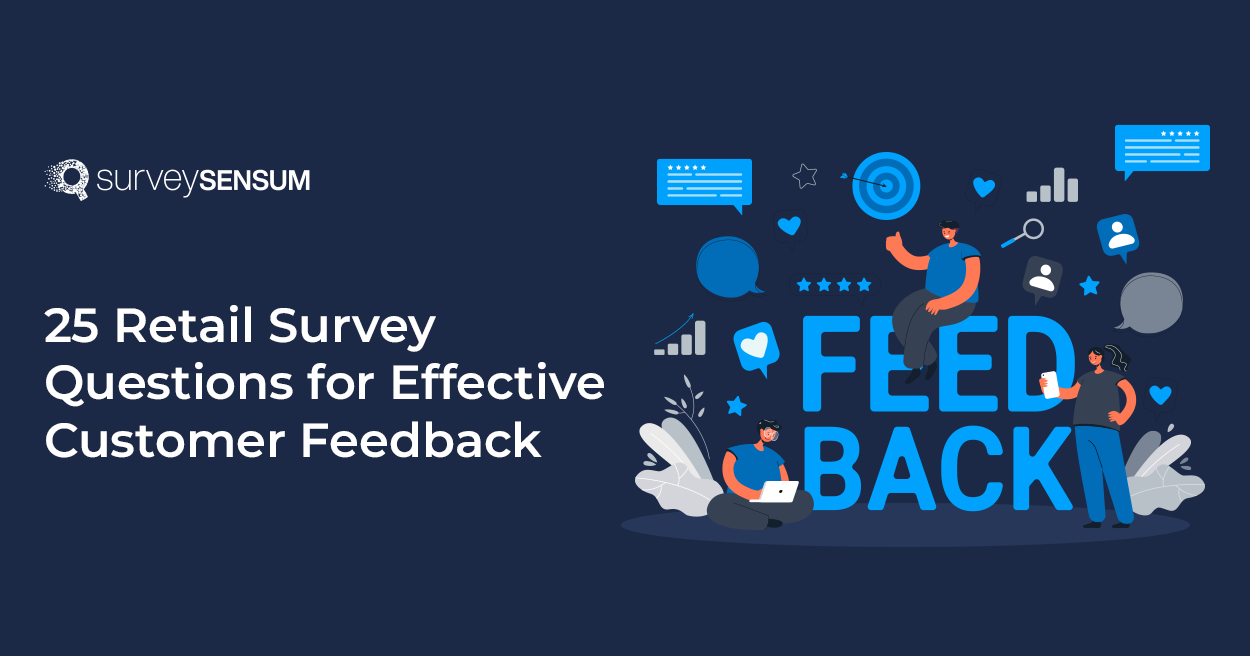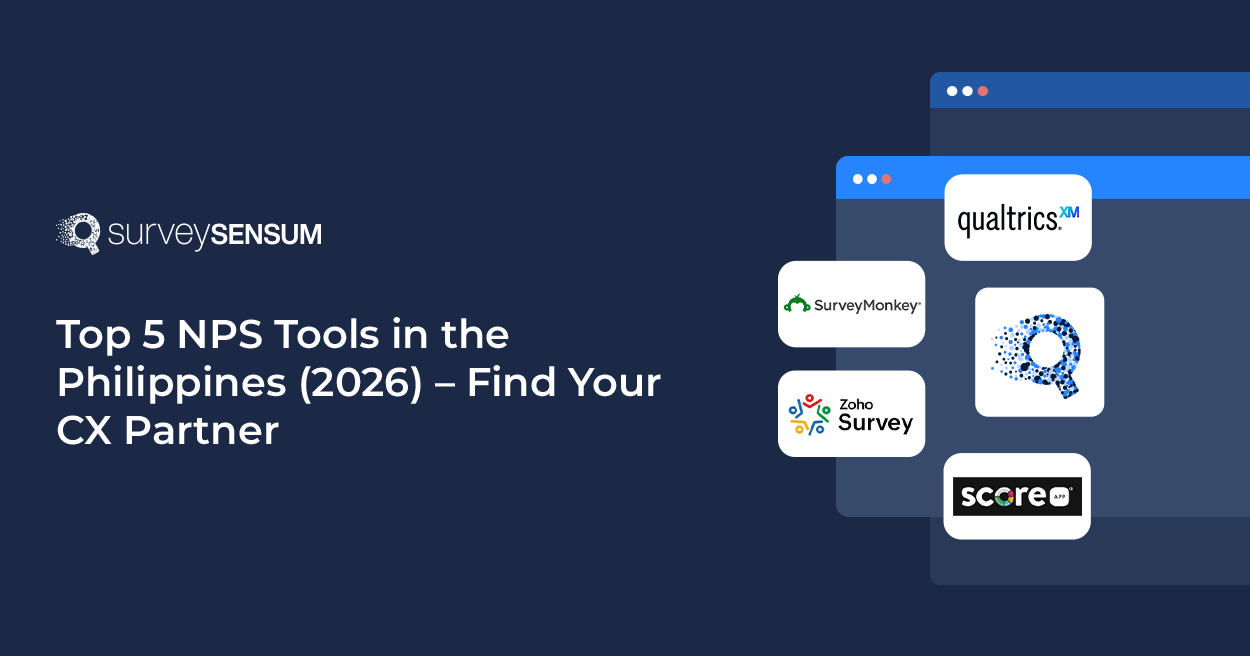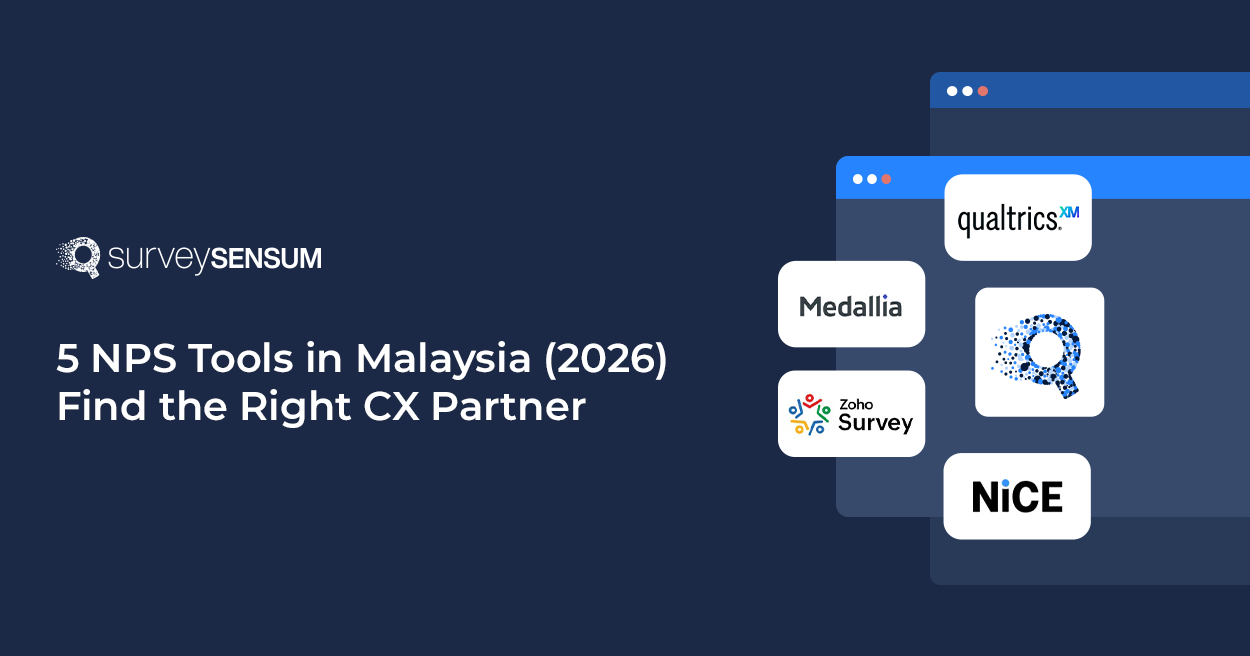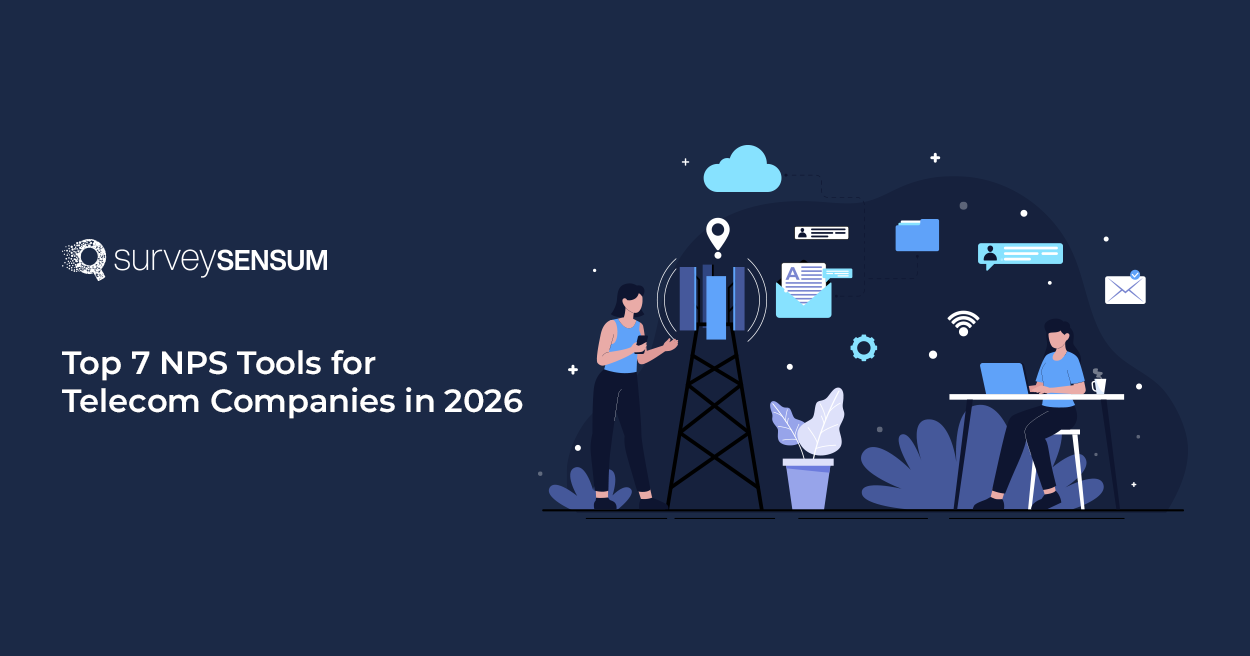

Picture this: You walk into a store with a specific item in mind, but upon arrival, you’re overwhelmed with options. You start to feel unsure and maybe even a bit frustrated. Just when you think you might have to leave empty-handed, a friendly and helpful staff member swoops in to save the day.
This scenario may seem simple, but it’s critical for any retail business. Customer satisfaction can make or break a company’s reputation which is why retailers should be aware of what’s working and what’s not for their business.
But how? With the help of retail surveys.
By gathering customer feedback, businesses can get valuable insights into their retail customer experience.
In this blog, we’ll explore the importance of retail surveys and provide you with the top 25 retail survey questions to ask your customers. Whether you’re a small business owner or a big retail corporation, this blog is for you.
So, let’s get started and uncover the power of retail surveys!
What are Retail Surveys?
Retail surveys are used to gather customer feedback about their shopping experiences. They are a form of market research that helps businesses understand what their customers think and feel about their products, services, and overall customer experience.
Retail surveys can be conducted through various methods, such as online surveys, in-store surveys, email surveys, and phone surveys.
They usually contain a set of questions that are designed to gather specific information about the customer’s experience, such as their satisfaction level, what they liked and disliked, what can be improved, and their overall opinions.
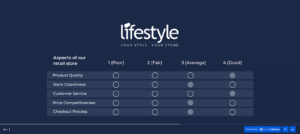
But are they really essential?
Yes, retail surveys are essential for businesses. They are a valuable tool for gathering feedback from customers about their shopping experience, opinions, and expectations.
Importance of Retail Survey Questions
They are!
With retail surveys, you can understand your customers well, and accordingly, you can customize your business’ products and services to deliver what your customers expect from you.
Here are some of the advantages of using retail surveys in your organization:
- Gather real-time customer insights to understand what your customers think about your business, products, and services.
- Analyze the customer feedback to understand customers’ expectations and issues thoroughly to close the feedback loop effectively.
- Improve your products, services, and overall business by efficiently using the gathered feedback.
- Make informed and strategic business decisions by using analyzed data – giving you an edge over your competitors.
- Enhance customer satisfaction and loyalty by showing them that their opinions matter and that you are actively working to improve their experience.
- Identify areas of your business that require improvement or where you can innovate to stay ahead in the market.
- Benchmark your performance against your competitors and industry standards to gain a comprehensive view of your business performance.
- Build a positive brand image and reputation by showcasing customer feedback and satisfaction through various marketing channels.
- Increase revenue and profitability by delivering products and services that align with customers’ preferences and expectations.
- Increase customer retention and acquisition by meeting customers’ needs and addressing their concerns.
To take advantage of retail surveys, launch it now.
Sign up to SurveySensum to create Free Retail Surveys
But do you know what questions to ask your customers post-shopping?
Let’s find it out.
Retail Survey Questions and Their Types
While designing customer feedback retail surveys, most businesses get stuck on – what question to ask.
That’s why to know what to ask your target audience– keep reading.
The following section on the types of retail survey questions covers different types of questions with examples to ask effective questions.
Because if you don’t ask effective questions then you won’t get valuable customer insights.
Types of Retail Survey Questions
1. Relational or Transactional Net Promoter Score Surveys (NPS)
Net Promoter Score (NPS) is a widely used metric in the retail industry to measure customer loyalty and satisfaction. NPS surveys can be either relational or transactional, depending on the scope of the survey. Here are some examples of retail survey questions for each type:
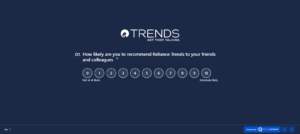
Relational NPS:
- How likely are you to recommend our store to a friend or colleague?
- On a scale of 0-10, how satisfied are you with our store overall?
Transactional NPS:
- Based on your recent experience with our store, how likely are you to recommend us to a friend or colleague?
- On a scale of 0-10, how satisfied were you with the service you received during your last visit?
You can also have a look at the 5 best NPS survey questions.
When should you use Relationship NPS Retail Survey Questions?
It is recommended not to use transactional NPS surveys after every single transaction. This is because loyalty takes time to build, and measuring it too frequently can lead to inaccurate results.
Instead, Relationship NPS surveys are best for measuring overall loyalty and should be taken once a quarter or twice a year. On the other hand, if you want to measure the satisfaction of each individual transaction, CSAT surveys are the way to go!
Learn more about the difference between transactional and relationship NPS surveys.
2. Customer Satisfaction Score Surveys (CSAT)

CSAT (Customer Satisfaction Score) is a popular type of retail survey question used to measure how satisfied customers are with a specific product, service, or experience. Here’s an example of a CSAT question:
→ “On a scale of 1-5, how satisfied were you with your recent shopping experience at our store?”
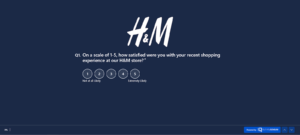
Customers can rate their satisfaction on a scale of 1-5, with 1 being very unsatisfied and 5 being very satisfied. The results are then analyzed to determine the overall customer satisfaction level, and improvements can be made based on the feedback received.
When should you use CSAT Retail Survey Questions?
- Post-purchase experience: After a customer makes a purchase, you can use a CSAT survey to measure their satisfaction with the product, the checkout process, and the overall shopping experience.
- Customer service interactions: If a customer contacts customer service for support, you can use a CSAT survey to measure their satisfaction with the interaction and the resolution of their issue.
- In-store experience: If you have a physical retail store, you can use a CSAT survey to measure customer satisfaction with the layout, cleanliness, and overall experience of shopping in the store.
- Online experience: If you sell products online, you can use a CSAT survey to measure customer satisfaction with the website, the checkout process, and the shipping and delivery process.
3. Customer Effort Score Surveys (CES)
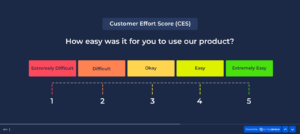
Customer Effort score surveys are another type of retail survey used to measure the customer’s ease of experience with a brand, product, or service. It is a good indicator of customer loyalty and can help businesses identify potential areas of improvement in their processes.
When should you use this?
CES Retail Survey can be used to assess the level of effort required by customers to complete a purchase, make a return, or resolve an issue with a product or service.
You can ask questions like → How easy was it for you to find our nearby store?
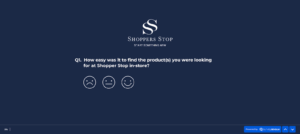
By identifying the friction that your customers face, you can improve those areas to deliver a great customer experience.
When should you use CES Retail Survey Questions?
- Checkout process: CES surveys can be used to measure the level of effort required by customers to complete the checkout process, including finding products, adding items to the cart, and completing the purchase.
- Product returns: CES surveys can be used to measure the level of effort required by customers to return a product, including finding the return policy, packaging the product, and sending it back.
- Customer support interactions: CES surveys can be used to measure the level of effort required by customers to resolve an issue with customer support, including finding the contact information, waiting on hold, and communicating with the representative.
- In-store experience: CES surveys can be used to measure the level of effort required by customers to navigate the store, find products, and interact with store associates.
4. Binary Question Surveys
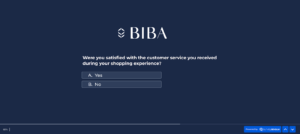
Binary survey questions are typically designed to elicit a “yes” or “no” response from the survey respondent. Here are some examples of binary survey questions that can be used in a retail setting:
- Did you find what you were looking for during your shopping experience with us?
- Were you satisfied with the customer service you received during your shopping experience?
- Did you make a purchase during your visit to our store/website?
All these given types of questions are the best shopping experience question examples to begin with. However, your survey doesn’t end here.
Asking follow-up questions is crucial.
Follow-up questions
You must ask follow-up questions to get the most insightful retail survey feedback.
Why?
Because asking follow-up questions gives your customers a space to appreciate or criticize your products, services, or business as a whole in their own words.
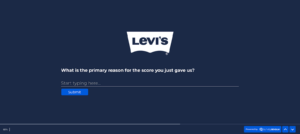
Retail Survey Questions and Examples
1. Questions on your Product and Pricing
Retail survey questions on products and pricing are questions that are designed to gather information from customers about their opinions and experiences regarding the products and pricing of a retail store.
These questions can be used to evaluate customer satisfaction and identify areas for improvement in the product and pricing strategies of the store. Here are some example questions:
- How satisfied are you with the quality of our products?
- How satisfied are you with the selection of products offered at our store?
- How would you rate the quality of our products?
- Did you feel that our products offered good value for the price?
2. Questions on Product Stock
Retail survey questions on product stock are a set of questions designed to gather feedback from customers about the availability of products in a retail store.
These questions aim to evaluate how often customers encounter stock issues, which products are frequently out of stock, and how customers feel about finding the product they are looking for out of stock.
To gauge your customer’s experience with your in-store product stock, ask the questions given below:
- Were you able to find clothes of your choice and size?
- Was our stock up to date with what you were looking for?
- Have you ever visited our store and found that the product you were looking for was out of stock?
- Which products do you usually find out of stock when you visit our store?
3. Questions on Service (Online and In-store Experiences)
A retail survey on service asks customers about their experiences with a company’s customer service, both online and in-store.
The questions aim to identify areas where the company can improve, such as staff friendliness, product knowledge, ease of checkout, and speed of delivery. Gathering feedback through these questions helps retailers enhance the customer experience and increase loyalty.
Here are some possible retail survey questions on service for both online and in-store experiences:
- How satisfied were you with the level of customer service you received during your most recent shopping experience with us?
- Did the sales associate(s) greet you in a friendly and welcoming manner when you entered the store?
- Were the sales associate(s) knowledgeable about the products/services you were interested in?
4. Questions on Returns (Both Online and In-store Experiences)
The retail survey questions on returns aim to gather feedback from customers about their experiences with the return process, both in-store and online.
The questions can help retailers identify areas where they can improve the return process, such as clarity of instructions, ease of initiating a return, speed of refund or exchange, and fairness of return policies.
Here are some possible retail survey questions on returns for both online and in-store experiences:
- Did you have any issues with returning your item(s)?
- Were you satisfied with the refund or exchange process?
- Did you receive clear instructions on how to return the item(s)?
5. Demographic Questions
The demographic questions can be used to segment the survey results by different groups of customers and to better understand their shopping preferences and behaviors.
Here are some examples of demographic questions that can be used in a retail survey:
- What is your age?
- Where are you located?
- Please choose your gender.
Note: It is important to keep in mind that some customers may not feel comfortable sharing certain information, so it is recommended to keep the number of demographic questions to a minimum and to only ask for information that is relevant to the survey objectives.
6. Questions on Brick and Mortar – Offline Stores
Retail questions on brick-and-mortar (offline) stores are designed to gather information from customers about their experiences with physical retail locations.
These questions can evaluate the customer’s satisfaction level with the store, identify areas for improvement, and provide insights to the store management team.
Here are some example questions:
- Was it easy for you to find our store?
- How did you get to know about our brand new store?
- Did you have to wait for too long for fitting rooms?
7. Open-ended Follow-up Questions
Launching an open-ended follow-up question can help you comprehend and analyze your customer’s thoughts behind the given score on the first question. Also, the data will help you to improve your products and services.
So ask the following open-ended follow-up question:
- What prompted you to visit our store today?
- What other brands or businesses do you prefer to shop at?
- How frequently do you visit our store?
Use and customize all these above-mentioned questions as per your business requirements. And continue improving and delivering the best customer service and experience.
Top 25 Retail Survey Questions to Ask in 2023
Here are the top 25 retail survey questions that you must ask your customers.
- How satisfied are you with your recent shopping experience?
- How easy was it for you to find our nearby store?
- How satisfied are you with the value for money of your purchase?
- How satisfied are you with the quality of our products?
- Were you able to find clothes of your choice and size?
- Was our stock up to date with what you were looking for?
- What other products would you be interested in shopping for?
- Did anyone help you while you were shopping in our store today?
- How satisfied were you with the customer service support you received?
- Are you satisfied with the return process of the product?
- What’s your name?
- What is your age?
- Where are you located?
- Please choose your gender.
- How did you get to know about our brand-new store?
- Did you have to wait for too long for fitting rooms?
- What prompted you to visit our store today?
- What other brands or businesses do you prefer to shop at?
- How often do you visit our store for shopping?
- Was the return process easy and straightforward?
- What products do you often buy from our store?
- Which of the following retail stores have you shopped at in the past month?
- How likely are you to recommend [Retail Store Name] to a friend or family member?
- How satisfied are you with the customer service you received during your last shopping experience at [Retail Store Name]?
- Do you usually have a specific shopping list in mind when you go to the store, or do you browse?
You know the questions you’ve sent the survey. But what happens when your customers don’t respond to you?
How to Improve Your Retail Survey Response Rate?
To improve your retail survey response rate, you need to take care of the following 5 points:
- Create your survey EASY and CONCISE.
- Send surveys at the RIGHT TIME to gather feedback on specific touchpoints.
- Use multiple SURVEY DISTRIBUTION CHANNELS to effectively distribute surveys.
- For in-store surveys, you can install kiosk surveys, send them a link to your online feedback form on their mobile phones, or add a QR code on the receipt to get instant feedback, etc.
- For online, consider those platforms that your customers often use like WhatsApp, SMS, in-apps, etc.
- PERSONALIZE the survey invite by adding their first name or their recent transaction.
- Ensure your survey is MOBILE-FRIENDLY.
- Offer incentives to encourage customer participation to boost your survey response rate.
- Send friendly FOLLOW-UP REMINDERS to those customers who haven’t completed the survey.
- TEST the survey with a small group of people to identify any issues before launching on a huge level. This will help you to make the necessary changes beforehand.
By implementing these 5 key strategies, you will observe a boost in your retail survey response rate over time.
We’ve discussed a lot about retail surveys, so it’s time to wrap it up.
Wrapping up
In conclusion, conducting a retail survey can provide businesses with valuable insights into customer preferences, attitudes, and behaviors. Using this information, companies can make data-driven decisions and enhance the retail experience, ultimately resulting in increased customer satisfaction and loyalty.
However, creating a well-designed and effective retail survey can be time-consuming and challenging. This is where SurveySensum can help.
As an AI-powered retail customer feedback platform, SurveySensum offers a range of survey solutions to help businesses gather accurate, timely, and actionable customer feedback.
SurveySensum Features:
- Customizable surveys with a range of question types, including open-ended and closed-ended questions
- Text and Sentiment Analysis to analyze and interpret survey results quickly and accurately.
- Real-time data visualization to track survey responses and identify trends and patterns
- Customizable themes and templates to create surveys that match your brand’s look and feel
- Integration with popular CRM marketing, and analytics platforms for seamless data sharing
- Automated survey distribution via WhatsApp, email, SMS, web, in-app, and social media channels
- Multi-language support for surveys to reach a global audience
- Robust security features to ensure that data is secure and compliant with regulations
- Dedicated customer support and onboarding to help businesses get the most out of the platform.
Overall, SurveySensum is an excellent solution for businesses looking to conduct effective retail surveys and improve the customer experience.






